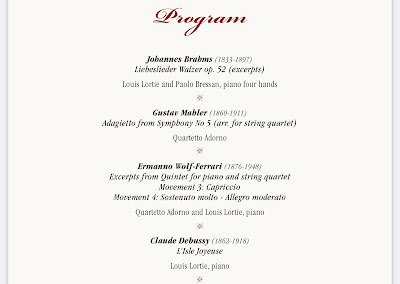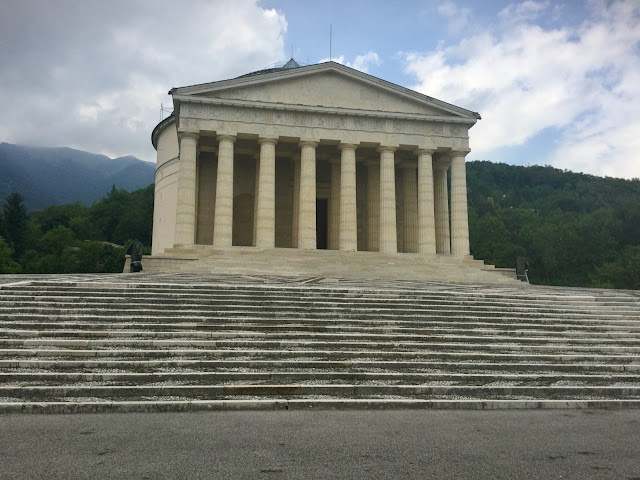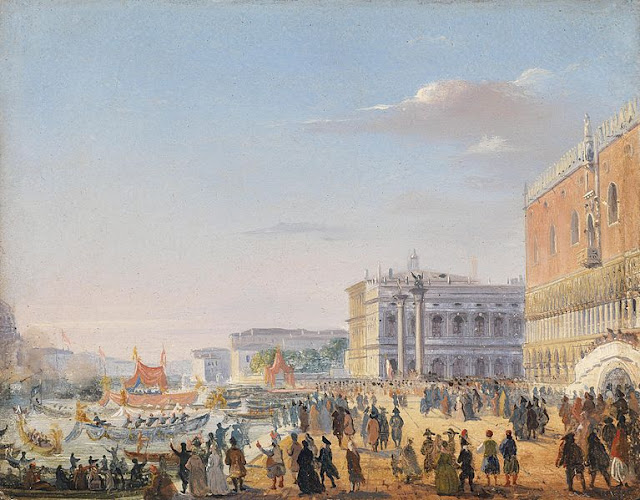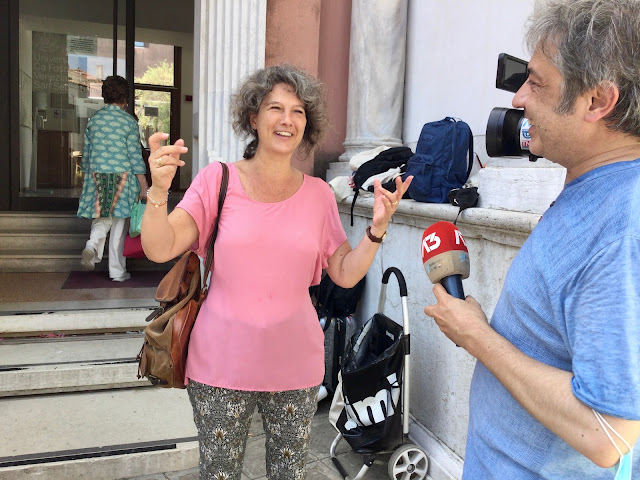 |
| Good Morning from the Venice Film Festival on the Lido - Photo: Cat Bauer |
(Venice, Italy) The 79th Venice International Film Festival, which took place on August 31 through September 10, 2022, is the world's oldest film festival and just celebrated its 90th anniversary. First launched in August 1932, major events like war and political unrest sometimes prevented the film festival from taking place, which accounts for the discrepancy in the years.
The Venice Film Festival was one of the rare international gatherings to physically take place during Covid, albeit with many precautions. After the global pandemic caused all sorts of chaos, this year things were finally back to normal,
with red carpets and movie stars, long lines for coffee, computers in the press room, and full
seating in the cinemas.
Here is a quick recap of the 19 films I managed to see, with letter grades and links to reviews that I agree with the most.
1. White NoiseI loved Noah Baumbach's
Marriage Story, which premiered in Venice in 2019, so I was looking forward to
White Noise, which opened the 2022 film festival. The film is the movie version of Don DeLillo's 1985 novel set in a college town struck by a toxic cloud, which I wish I had remembered before I saw it -- I could not get a firm grasp on what year we were in and the dialogue was unnatural.
From the
Time review: "Much of the movie’s dialogue comes straight from DeLillo, to the point
where the actors seem to be reciting memorized language rather than
acting." And: "It’s hard to know exactly what Baumbach is going for here, other than
perhaps reminding us that the key to living is just going about your
life. But you probably don’t need two hours and 16 minutes’ worth of
movie to tell you that." Scheduled for limited release in the U.S. on November 25, then streaming on Netflix. Wait for the stream. Grade: B-
2. TárTár was one of my favorite films of the entire festival, which I wrote about
here. Cate Blanchett is spectacular as a diva symphony orchestra conductor -- she won Best Actress at the Venice Film Festival. Todd Field wrote the part specifically for her, and his direction is brilliant. I predict they both will be nominated for Oscars, as will much of the cast. If you know who Adam Gopnik is (who plays himself), you will probably enjoy the film.
I agree with my favorite film critic, Owen Gleiberman, at
Variety: "The movie is breathtaking — in its drama, its high-crafted innovation, its vision." It's scheduled to be released in the U.S. on October 7. Grade: A
 |
Timothée Chalamet on the Red Carpet for Bones and All
Photo courtesy of La Biennale di Venezia ASAC - Giorgio Zuchiatti |
3. Bones and AllI will see anything that Timothée Chalamet is in because he is riveting to watch. However, I did not know this was a cannibal romance movie. The blood and graphic feasting on human flesh made me queasy -- it is not titled "Bones and All" for nothing. That said, I thought the film was surprisingly boring, too long and repetitive.
It's the first film that Italian director
Luca Guadagnino made set in the United States, and the jury headed by Julianne Moore awarded him the Silver Lion for Best Director, so apparently they disagree with me. Talented co-star Taylor Russell was awarded the Marcello Mastroianni Award for Best New Young Actress.
However, Owen Gleiberman at
Variety concurs: "The film is two hours and 10 minutes long, and despite the period hook
of its 1988 setting, almost nothing of interest happens in it. It
sprawls all over the U.S., and the images have a travelogue sensuality,
but 'Bones and All' is a concept in search of a story. The film doesn’t
draw us in. It stumbles and lurches and seems to make itself up as it
goes along. You may feel eaten alive with boredom."
Bones and All is scheduled to be released on Thanksgiving weekend in the U.S., so it's best to wait until after you eat your turkey to see it. Grade: B-
4. A Compassionate SpyA documentary about Ted Hall, who worked with the Manhattan Project as a young man, and passed nuclear secrets to the Soviet Union to prevent the United States from having exclusive possession of the atomic bomb, and his wife, Joan, who loved him. Interesting, but not compelling. Review at
Indiewire. Grade: C+
5. Master GardnerPaul Schrader's film about a gardener with a dark history. From
Screendaily: "...it’s dramatically involving, and features standout performances from a tantalizingly hard-to-read Joel Edgerton, Sigourney Weaver at her
loftiest, and Quintessa Swindell, an up-and-coming graduate of TV’s
Euphoria,
Trinkets and
In Treatment. Their presence, and Schrader’s currently enhanced profile, should see prospects bloom." Release date in the U.S. is October 1, but unless you're a die-hard Schrader fan, you can wait until it streams. Grade: B
6. Argentina, 1985Well worth watching. From
The Guardian: "There’s a fair bit of Hollywoodised emotion in this true-life courtroom
drama, but it is managed with terrific flair and heartfelt commitment,
and Ricardo Darin gives a wonderful performance in the lead: witty, wry,
careworn but idealistic. He plays Julio Strassera, the Argentinian
chief prosecutor in charge of the junta trial in 1985, the biggest event
since Nuremberg..." PrimeVideo release date is September 29. Grade: B+
7. MonicaTrace Lysette plays a transgender woman who reluctantly comes back home when she learns her estranged mother, Patricia Clarkson, is dying. I thought the performances were good, but it was way too slow.
From
Cineuropa: "The main problem impacting Pallaoro’s film is its pace: everything
happens in an incredibly long and drawn-out fashion, precluding any
sense of anticipation and relying too heavily on things left unsaid." The film is still seeking distribution, so there is no U.S. release date yet. Grade: C+
8. Immensity (L'Immensità)I always like Penelope Cruz, which is why I went to see this film. Italian director Emanuele Crialese recently came out as a trans man, and said his film about a 12-year-old girl who feels she is a boy is the most autobiographical movie he has made. It's uneven, sometimes a serious drama about a very troubled marriage and sometimes a musical fantasy, but it pulses with energy.
Set in Rome in the 1970s, I loved watching the original musical television shows. From
Deadline: "he has chosen a handful of contemporary pop songs as musical set-pieces
imitating those old television variety shows, in which the family become
stars and choruses of schoolgirls camp it up in cast-of-thousands dance
numbers."
You've just got to click over to the
Facebook page of Rai Cultura, an Italian TV channel, and watch my favorite 70s Italian song and dance number:
Adriano Celentano & Raffaella Carrà performing "Prisencolinensinainciusol," nonsense gibberish that deliberately sounds like American English, which is a work of genius. So wacky and wonderful! (If you want to watch the high quality original, go to
RaiPlay, but I think you have to download the app.)
L'Immensità was released in Italy on September 15. Grade: B
 |
The Banshees of Inisherin Official Poster
|
9. The Banshees of InisherinIt's a tie between
Tár and
The Banshees of Inisherin as to which one was my favorite film of the Venice Film Festival -- I think just about everybody loved this movie. A black comedy set on an imaginary island off the Irish coast,
Banshees was written
and directed by the critically acclaimed playwright Martin McDonagh (
Three Billboards Outside Ebbing, Missouri), who won Best Screenplay. Colin Farrell, bewildered as to why his best friend, played by Brendan Gleeson, has stopped speaking to him, won Best Actor.
There is nothing more cathartic than sharing a good laugh with a bunch of people at the movies. Since it has now screened at the Toronto Film Festival, here's a review from the
New York Post: "There are a million terrific little quirks....You won’t find a funnier movie this year." Opens in theaters in the U.S. on October 21. Go see it! Grade: A
 |
Harry Styles at photo call for Don't Worry Darling
Photo courtesy of La Biennale di Venezia ASAC - Giorgio Zuchiatti |
10. Don't Worry Darling
There was a lot of commotion about Harry Styles dating director Olivia Wilde, and actor Florence Pugh (wisely) not showing up to the press conference (but she stole the show on Venice's red carpet). Does Don't Worry Darling live up to the hype? No.
From
Slant: "
Don’t Worry Darling has the swing-for-the-fences ambition that
should have at least made it a noble and compelling folly, but its
repetitiveness frustratingly undercuts its grandiosity, rendering the
whole film tedious." In cinemas September 23. You can wait for it to stream. Grade: B-
11. Dead For a DollarI really enjoyed 80-year-old Walter Hill's latest Western about a bounty hunter played by Christoph Waltz. From
Deadline: "...while it shows up the limitations of both writing and shooting a Western
in the modern age (concessions to modern sensitivities have to be made,
and digital cinematography somehow just doesn’t cut it with the subject
matter), it’s nevertheless a wickedly enjoyable genre romp and full of
violent surprises." In theaters and digitally on-demand in the US on September 30. Grade: B
12. Dreamin' WildThe screenplay for
Dreamin' Wild was inspired by a newspaper article about real-life brothers Don and Joe Emerson, who recorded an album when they were teens, full of promise that eventually went nowhere. Thirty years later, the album, "Dreamin Wild" was rediscovered and became a hit on the vinyl circuit.
The story makes a good newspaper article but a hokey movie, starring Casey Affleck as Don Emerson and Beau Bridges as the father who believed so much in his sons that he built them a home studio out in the boondocks, losing a good chunk of his farmland in the process. From
Variety: "“Dreams come true in time, occasionally 4/4 time,” reads a title card at
the outset of “Dreamin’ Wild” — a quote attributed to nobody, which
rather emphasizes its greeting-card quality. It’s a cornball note on
which to start a film..." I can't find a U.S. release date. Grade: C
13. The SonWhile many male critics in Venice liked
The Son starring Hugh Jackman and Laura Dern -- I imagine because they relate to the dynamic between father and son -- I found it repetitive and did not connect to it on an emotional level. Here is a (male) critic from the
New York Post, with whom I agree: "Zeller’s latest mental health movie is an exhaustingly tedious
experience in which you check your watch several times a minute while
taking breaks from giggling at the clumsy dialogue. The writing is
godawful, there is no dramatic build to speak of and the acting
collectively amounts to a ceaseless whine, like a dog left home alone
during a storm." The US release date is November 22. Grade: C-
 |
Blonde billboard on the Lido - Photo: Cat Bauer
|
14. BlondeAnother movie that was hyped to the max,
Blonde was tedious and did not live up to the buzz -- the fault, I think, of writer-director Andrew Dominik -- not the star, Ana de Amas, whose performance as Marilyn Monroe was brilliant.
From
CNN: "The gap between a star performance and the movie containing it has seldom been wider than in "Blonde," which features
Ana de Armas
stunningly capturing the look and essence of Marilyn Monroe in the
service of a film that's pretentious, heavy handed and lengthy to the
point of exhaustion." Premiered in the US on September 16 in select theaters (don't go), and then streams on Netflix starting September 28 -- Netflix should be held responsible for these overly-long movies, which you can pause at home but not in a cinema. Grades: Ana de Amas: A
Blonde: C-
 |
Oliver Stone gets standing ovation for Nuclear world premiere
Venice Film Festival - Photo: Cat Bauer
|
15. Nuclear
"This was a pain in the ass to make," Oliver Stone said at the press conference for Nuclear.
Based on the book, "A Bright Future - How Some Countries Have Solved
Climate Change and the Rest Can Follow," written by Joshua Goldstein,
Professor Emeritus of International Relations at American University,
Stone not only had to simplify the scholarly language, but also had to differentiate nuclear energy from the nuclear bomb just so ordinary folks could
digest the message.
Stone starts the film off with images that anyone who
grew up in the 1960s will remember: how we had to duck under our desks
and cover our heads so the atom bomb wouldn't annihilate us. As children, we were terrified. I would put myself to sleep by dreaming who I
would invite into my bomb shelters. I had two imaginary shelters -- one
was underground in my backyard, and the other was in a drive-in enclosed
parking lot.
During the press conference, Oliver Stone wondered if people would pay attention
to his concerns and solutions, but judging from the long standing
ovation at the world premiere in Venice, attended mostly by members of
the public as well as the accredited, I think people are willing to
listen.
From The Wrap:
"Stock footage, graphs and Stone’s own narration confirm the
Oscar-winning director is here to teach rather than to entertain... Even
if the vehicle to deliver it is dull, Stone’s pursuit to
disseminate a hopeful take in the face of the current apocalyptic
prognosis for our collective existence remains commendable." Worth
watching if you're concerned about climate change and looking for a viable solution.
I can't find if it's streaming yet or not, but with the amount of effort Stone put into the project, we can be sure it will be seen. Grade: B+
16. Look at MeA short 16-minute film by Sally Potter starring Chris Rock as a gay gala organizer who has a problem controlling Javier Bardem, his intense drummer lover. Well, it's short. Grade: B
17. The Hanging SunThe closing film of the Venice Film Festival was surprisingly good. I always expect films directed by Italians to be... well... Italian. But
The Hanging Sun, directed by Francesco Carrozzini, has an American sensibility, and he knows how frame a scene. It turns out that he is well-connected: he studied film at UCLA; his mother is the late Franca Sozzani, the editor of Italian
Vogue; his wife is Anna Wintour's daughter, Bee Shaffer; plus he's got a bunch of cool music videos he directed under his belt. But most importantly, he's got talent.
From
Cineuropa: "Overall, Carrozzini successfully transposes a captivating story about
hate and toxic family relationships to the big screen, assembling an
effective cast and lending the movie great pace." Coming soon to theaters and then premiering on Sky and on streaming service NOW. Grade: B+
18. PearlThe only reason I saw
Pearl is because it screened after
The Hanging Sun and I was already at the theater. It's a horror prequel to Ti West's
X, which I'd never even heard of. But now I see
Pearl has scored a review in the
New York Times by none other than A.O. Scott: "The bloodshed is at least as grisly as the slaughter in “X,” but “Pearl”
occupies a different corner of the slasher-movie universe. It isn’t
especially suspenseful — the identity of the killer is never in doubt,
and her victims don’t elicit much sympathy — but it has a strange,
hallucinatory intensity."
Pearl held my attention. It opened in the U.S. on September 16. Grade: B
 |
The Adriatic Sea from the roof terrace of Palazzo del Cinema, the Lido - Photo: Cat Bauer
|
19. All the Beauty and the BloodshedWinner of the Golden Lion, the Venice Film Festival's top prize, the documentary
All the Beauty and the Bloodshed by Academy Award-winning director Laura Poitras about the artist Nan Goldin's battle to take down the Sackler family for causing the opioid crisis in the United States was universally praised by most critics. I didn't get a chance to see it at the festival, but the Rossini Multiplex in Venice always screens the Golden Lion winner the next day, so I saw the film on Sunday together with the general Venetian public. About 10 people walked out before the movie was over, and I nearly fell asleep. I will have to see it again because it seems that I lost the plot completely -- maybe it's because we don't have an opioid crisis in Italy? Marketing of drugs directly to patients is prohibited in Europe, as it once was in the United States. (Report:
Is Europe facing an opioid crisis like the United States? An analysis of opioid use and related adverse effects in 19 European countries between 2010 and 2018)
From
Indiewire: "That
title. Even before it screened, “
All the Beauty and the Bloodshed” cast a shiver across the
Venice
Film Festival competition, sounding more like a line from a Yeats poem
than the latest documentary from the director of “CITIZENFOUR.” The big
news: the film lives up to it. Already a robust director,
Laura Poitras has leveled up with a towering and devastating work of shocking intelligence and still greater emotional power." Grade: Right now I'm not grading it until I see it again. HBO has got the streaming rights. Watch it and decide for yourselves.
 |
The wild side of the Lido, Venice - Photo: Cat Bauer
|
Attending the Venice Film Festival on the Lido is exhilarating, exhausting, and rewarding. Sitting in a theater together with fellow human beings and sharing the same experience is a gift given by the art of the cinema. The buzz of the comings and goings on the red carpet in the background adds another element of magic. I am always sad when it is over -- it also signals the end of summer, and the end to splashing in the diamonds of shimmering sunlight that sparkle on the gentle waves of the Adriatic Sea.



























.JPG)

.JPG)













